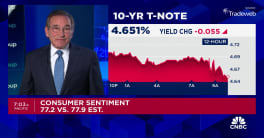Freddie Mac�s Weekly Primary Mortgage Market Survey reported that mortgage rates were down for the most part for the week ending May 5, 2005. This is the fifth week in a row that Freddie has recorded a decline in the two popular fixed rate products and the 5/1 ARM. The 1-year ARM was up a single basis point to 4.22 percent, the second slight upward tick it has taken in the same five week period.
The rate drops enjoyed by the other three categories were small: the 30-year mortgage averaged 5.75 percent, down from 5.78 percent the previous week; the 15-year mortgage was at 5/31 percent, also down three basis points, and the 5/1 ARM dropped from 5.20 to 5.16 percent. Freddie reported that fees and points remained at 0.6 for both types of fixed rate mortgages and were up 0.1 to 0.6 and 0.7 for the 5/1 and 1-year respectively.
The more comprehensive Mortgage Bankers Association survey which covers approximately 50 percent of the retail mortgage applications in the country showed across the board increases in the three types of mortgages it tracks. The 30 year fixed averaged 5.77 percent compared to 5.74 percent for the previous week. The 15-year fixed was also up three basis points to 5.34 percent and the 1-year ARM was at 4.20 percent, a relatively substantial increase from 4.14 percent the prior week.
MBA said that mortgage activity was up 9.8 percent from the previous week. Its senior vice president and chief economist, Douglas Duncan said that a recent decline in rates, a strong jobs market and good weather "have led to a record level of purchase applications both for the week and for four-week rolling averages."
Refinancing also continued as a strong factor in the mortgage market, rising to 39.2 percent of total applications from 39.1 percent the previous week.
MBA also released results of its survey covering mortgage activity during the third and fourth quarters of 2004.
This longer-term survey showed that the dollar volume of mortgage originations were down 9 percent from the first half of the year to the second. Much of this drop-off came from a decline in refinancing. Therefore purchase money mortgages represented 51 percent of the dollar volume for the second half compared to 41 percent during the 1st and 2nd quarters.
The survey found that non-prime and alternative-A loans increased to a 1/3 share of originations in the second half and that those customers opting for adjustable rate mortgages were divided pretty evenly between the traditional 1-year ARMs and what are called hybrid ARMs such as the 5/1 or the 3/1.
Second mortgage loans as measured by dollar volume increased by 17 percent in the second half of the year and, perhaps most interesting, piggyback loans, that is second mortgage loans closed simultaneously with first mortgages, usually as a technique to avoid private mortgage insurance, accounted for 66 percent of all second mortgage loans originated in the second half of 2004.
More MND Newswire:
-
Wed, 8:36 AM
-
Tue, 12:47 PM
-
Wed, 8:35 AM
Other points of Interest
CNBC - 10:51 AM
CNBC - 10:51 AM
CNBC - Thu, 2:18 PM
Trending News
-
Thu, 11:40 AM
-
Today, 12:25 PM
-
Today, 5:23 PM
-
Today, 11:52 AM
How would you like to share this content?
Share via Social Media:
All social media shares will include the image and link to this page.







